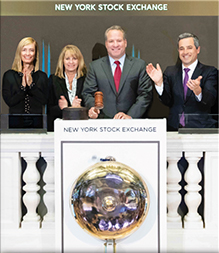As we approach this year’s December 31st deadline for Roth conversions, and with the looming expiration of the Tax Cuts and Jobs Act (TCJA), set to expire at the end of 2025 causing 2026 tax rates and brackets to be higher for most households, many people are looking to see if Roth conversions are appropriate for them. In this article we will evaluate some of the things you should know before converting, including the often overlooked pro-rata rule.
There are two main types of Roth conversions. One involves converting pre-tax savings into a Roth, which is a taxable event. After spending years contributing pre-tax funds to a qualified retirement account, such as a traditional IRA, you may want to consider realizing some of the taxable burden now in favor of accruing additional funds into an after-tax Roth IRA account that can offer tax-free growth. The other added benefit is lowering your future RMD amounts. There are no limits to how much you can convert to a Roth account, so you can also bypass the annual contribution limits of $6,000 plus $1,000 catch-up for 2022. However, keep in mind the amount converted will be included as ordinary income to you for the current taxable year, and while not necessary, you should have enough funds to pay for the taxes out of pocket.
The second type of Roth conversion involves using a traditional IRA as a conduit to bypass the strict income limits on Roth contributions (complete phase out at $144,000 for Single, or $214,000 MFJ for 2022), and is often referred to as a Backdoor Roth conversion.
Backdoor Roth conversions may seem too good to be true when considering the tax-free growth plus tax-free distribution benefits. The classic example would be for a high income earner, who makes above the threshold for deductible IRA contributions, contributing a non-deductible after-tax contribution to their traditional IRA, enabling them to Backdoor convert this after-tax money to their Roth account tax free. However, there are some tax implications and special rules that can be tricky to navigate and you should be aware of before doing any conversions.
Enter the Pro Rata Rule, this rule applies when an investor has pre-tax and after-tax money in a traditional IRA. When doing a conversion from an IRA account that has both sources of contributions, you are not able to select only the after-tax portion when doing a conversion, so the Pro Rata Rule is used to determine the ratio that should be used in determining how much of the conversion is pre-tax vs after tax.
The IRS requires you to include the value of all your non-Roth IRAs as the basis. The formula for tax purposes looks like this:
(non-deductible amount) / (total of all non-Roth IRA balances) = non-taxable percentage
(amount to be converted to Roth IRA) x (non-taxable percentage) = amount of after-tax funds converted to Roth IRA
For example, let’s say you earn above the income thresholds for making a Roth IRA contribution and have $93,000 of pre-tax money already in a traditional IRA, and you want to make a Backdoor contribution to a Roth IRA account of $7,000. First you would make a non-deductible traditional IRA contribution of $7,000, bringing your account balance up to $100,000, and if you didn’t read this article you might think you can convert the $7,000 after-tax portion to the Roth IRA and be done. However, this is where the Pro Rata Rule would kick in and say that of the $7,000 you plan on converting 93% ($93,000 pre-tax portion divided by the $100,000 total) of the $7,000 conversion would actually be taxable to you. Only 7% of the $7,000 Roth conversion would be tax-free. This would also leave $6,510 (93% of $7,000) of after-tax funds in the traditional IRA and would complicate your next conversion further.
There are a couple options for removing only the pre-tax portion out of your IRA, and improving your Pro Rata Rule ratio. If your employer’s 401(k) plan allows for a reverse rollover, you can roll only the pre-tax portion or your IRA into your 401(k) account. Another option would be a Qualified Charitable Distribution (QCD) which would pull only the pre-tax amounts from your IRA.
Some other important considerations:
You’ll need to consider the value of all IRAs to determine the pro-rata portion that is after-tax, even if you only made after-tax contributions to one account. Inherited IRAs, 401(k), 403(b) plan’s balances are not counted, however SEP IRA values and SIMPLE IRA values are included in the definition of all IRAs. Even though these types of accounts are company sponsored, they must be included in the pro-rata calculation.
IRAs are by definition individual, so even for taxpayers filing a joint return, an individual IRA is not combined with the spouse’s IRA for purposes of the pro-rata rule.
Also, since the Pro Rata Rule isn’t calculated until December 31st of the current year, you won’t know the taxable percentage until after the year has concluded. A Roth conversion made early in the year could be affected by a subsequent rollover later that same year and trigger the Pro Rata Rule.
As always, it is important to consult a tax or investment professional before making these important decisions.
.
Click here to read more of my RetireMint articles. Follow me on Twitter.
This document is for educational and informational purposes only and does not constitute an advertisement or solicitation of any securities or investment services provided Mainstay Capital Management, LLC (“MCM”). This document should not be construed as investment, tax, or legal advice, or a solicitation, or a recommendation to engage in any specific strategy. MCM is an independent investment adviser registered with U.S. Securities and Exchange Commission. MCM specializes in workplace savings plan portfolio management and retirement planning advice for active employees and retirees. This document was prepared by MCM primarily based on data collected and analyzed by MCM. The opinions expressed herein are those of MCM alone and are for background purposes only. MCM does not purport the analysis to be full or complete or to constitute investment advice and should not be relied on. In addition, certain information contained herein or utilized to draw the conclusions contained herein has been provided by, or obtained from, third party sources. While MCM believes that such sources are reliable, it cannot guarantee the accuracy of any such information and does not represent that such information is accurate or complete. All materials and information are provided “as is” without any express or implied warranties by MCM. MCM charges its fee based on a percentage of assets under management, which creates an incentive and conflict of interest to increase assets in that account. Furthermore, MCM has two different fee schedules, and therefore has a conflict of interest when assets or accounts move from the lower fee schedule to the higher fee schedule. Opinions expressed are subject to change without notice and are not intended as investment advice or to predict future performance. Consult your financial professional before making any investment decision. Please see MCM’s Form ADV Part 2A and Form CRS for additional information.







